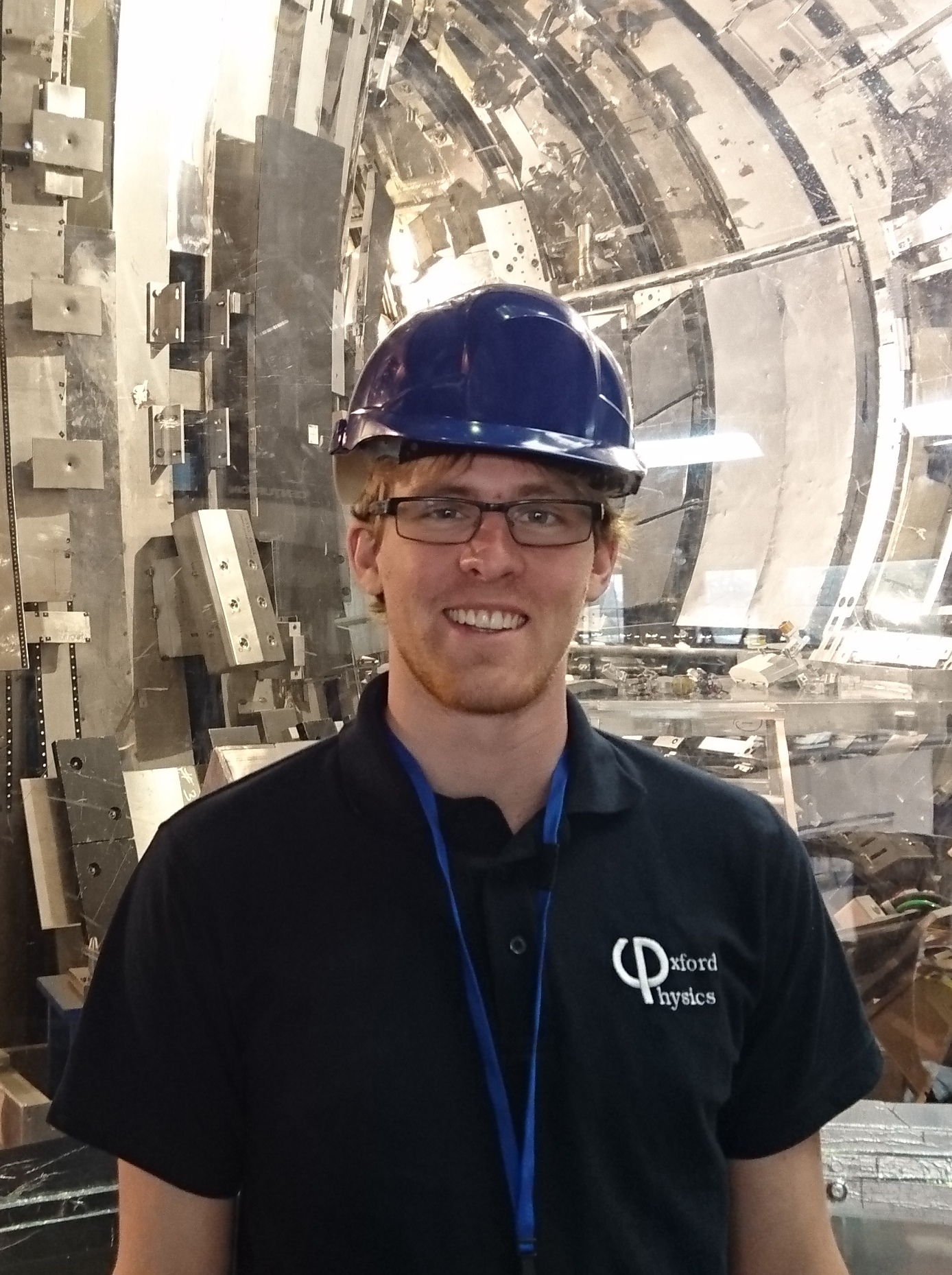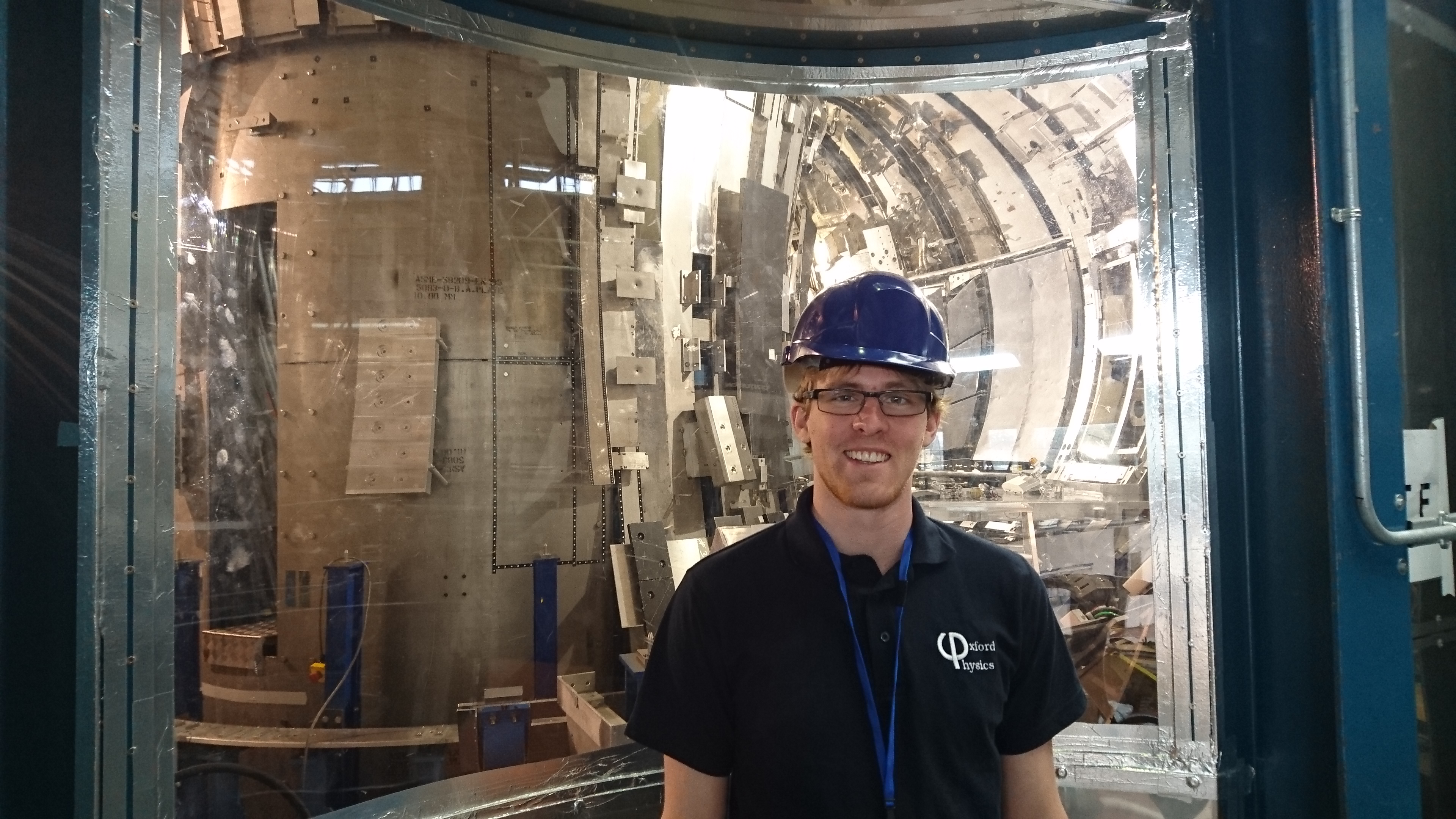Master internship at the Culham Centre for Fusion Energy, UK.
Reported by Hannes Damm. Powered by FuseNet.
 I am Hannes Damm and I’ve spend about 650 hours working at the Joint European Torus Experiment (JET) in Culham and some extra time at the University of Oxford. As a visiting research student, I have lived in College accommodation which was available for 450 GBP per month, which is a reasonable price compared to the Oxford-average. Besides the rent, expenses for food were quite high in the South of England, so I am glad that FuseNet was able to provide me with some funding, because otherwise I wouldn’t have been able to afford to do this internship. Luckily the travel costs were low due to the high standard of public (bus) transportation in England and the relatively cheap RyanAir flights.
I am Hannes Damm and I’ve spend about 650 hours working at the Joint European Torus Experiment (JET) in Culham and some extra time at the University of Oxford. As a visiting research student, I have lived in College accommodation which was available for 450 GBP per month, which is a reasonable price compared to the Oxford-average. Besides the rent, expenses for food were quite high in the South of England, so I am glad that FuseNet was able to provide me with some funding, because otherwise I wouldn’t have been able to afford to do this internship. Luckily the travel costs were low due to the high standard of public (bus) transportation in England and the relatively cheap RyanAir flights.
The purpose of my research at JET was to find possible sources for density discrepancies in the data from the High Resolution Thomson Scattering (HRTS) density spectrometers. In order to do so, I wrote a Python code that calculates a discrepancy parameter, based on the comparison between the density as measured by the HRTS system and the results of other density measuring systems. This parameter was screened for dependencies on other physical plasma parameters for which a dependency was expected, such as the electron core temperature, the electron core density, the electron core pressure, the magnetic pressure, the plasma-wall distance and the heating power of the Neutral Beam Injection (NBI) system. In the remainder of my work, I focussed on the NBI heating power, which showed a linear dependency, which could not be explained based on the known physics. When I included the other heating sources (namely Ohmic Heating, Lower Hybrid Current Drive and Ion Cyclotron Resonance Heating), the discrepancy showed a similar dependency on all of them. However, these dependencies were weaker than the dependency on the NBI power, because the available power was also lower. Consequently, no one has observed these dependencies before.

The discovered behaviour indicated that a recalibration of the analysed data was necessary. With this knowledge and a more detailed analysis in mind, my supervisor, Joanne Flanagan, and I were able to find a better calibration for the HRTS density data, which reduced the found discrepancies to a few percent. After presenting this study to the HRTS group at JET, we decided to recalibrate the density data of a wide range of JET pulses, the results of which are now available to the whole fusion community as public JET data.
Improving the performance and reliability of the available plasma diagnostics, is crucial to make controlled fusion energy happen. Especially, since the number of diagnostics in power plants need to be reduced to a minimum to avoid thermal losses through the diagnostic ports. As such, I hope that my work on the HRTS diagnostic, contributes in making diagnostics a less challenging problem.
